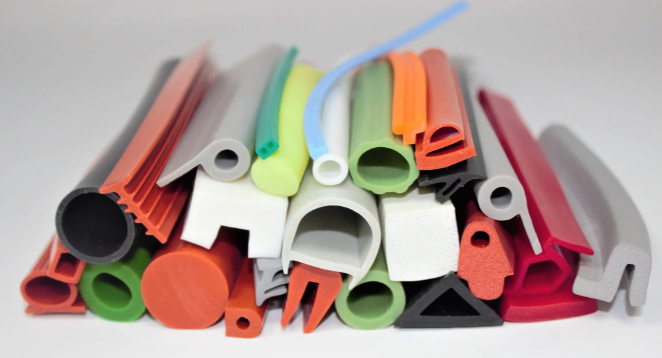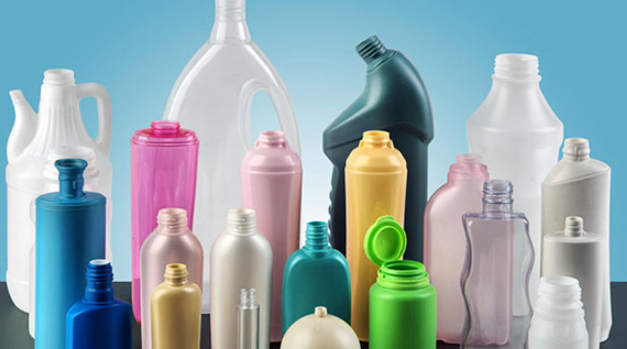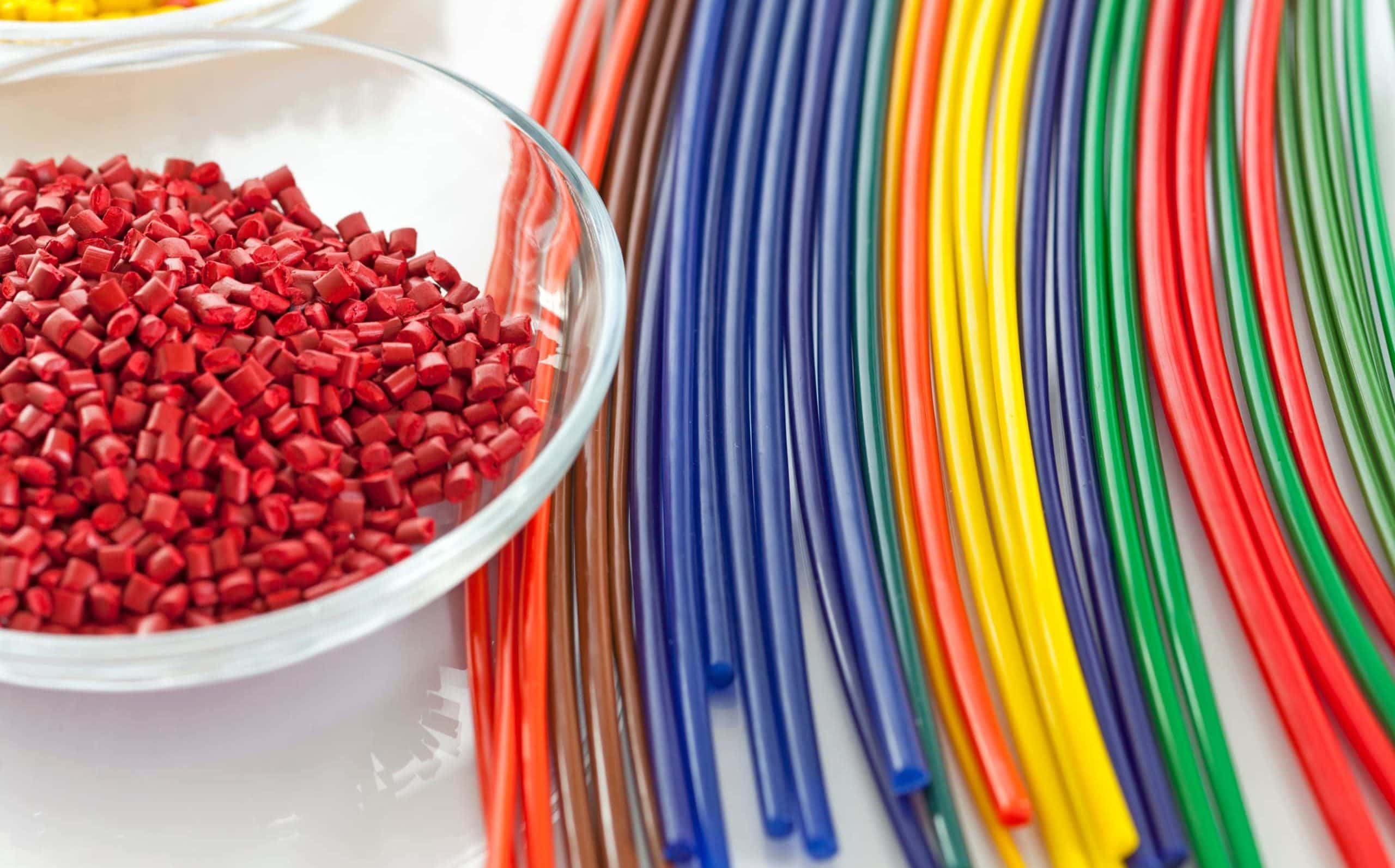Quality control in extrusion ensures dimensional accuracy, material uniformity, and adherence to performance standards.

Fundamentals of Extrusion
Extrusion is a high-volume manufacturing process in which manufacturers deform a material to produce a long part with a fixed cross-sectional profile. This process involves forcing material through a die of the desired cross-section under high pressure. The two main advantages of this process are the ability to create complex cross-sections and work materials that are brittle, as the material only encounters compressive and shear stresses. It also forms parts with an excellent surface finish.
Types of Extrusion Processes
Hot Extrusion
Hot extrusion involves heating the material to reduce its viscosity and increase its malleability, making it easier to force through a die. Industries commonly use this process for metals like aluminum and copper, significantly enhancing ductility and reducing the force required for extrusion. The key benefit of hot extrusion includes the ability to create more intricate shapes compared to cold extrusion.
Cold Extrusion
Cold extrusion, in contrast, occurs at or near room temperature. This process allows for greater strength, greater precision, and better surface finish of the final product. It is ideal for steel, titanium, and other metals where increased hardness and reduced ductility are desired. Manufacturers prefer this method for producing parts like automotive components, where high strength and precision are essential.
Warm Extrusion
Warm extrusion strikes a balance between hot and cold extrusion, typically performed at temperatures between 800°F to 1800°F for aluminum alloys. This method reduces the forces required to shape the material while allowing for greater control over its properties. The resulting parts offer better mechanical characteristics and closer tolerances than hot extrusion.
Materials Used in Extrusion
Extrusion supports a wide range of materials, including metals (aluminum, magnesium, copper, steel), polymers (PVC, HDPE, LDPE), and even food products. The choice of material affects the extrusion process; for example, polymers and certain metals may need lower temperatures and pressures compared to more substantial metals like steel.
Key Components of an Extrusion Machine
An extrusion machine primarily consists of a hopper for feeding the raw material, a barrel where material gets heated, a die that shapes the material, and a ram or screw press which applies the necessary force. The die is a critical component as it defines the shape and surface finish of the extruded part. Temperature controls are essential for maintaining the right material flow, and the press mechanism determines the consistency and quality of the output.

Quality Control in Extrusion Process
Quality control in the extrusion process is crucial to ensure that the final products meet the desired standards and specifications. Effective quality control optimizes product performance, lifespan, and cost-effectiveness. Key aspects of quality control include material quality, machine settings, and process variables.
Definition of Quality in Extrusion
Quality in extrusion refers to the degree to which the extruded products meet a set of predefined criteria. These criteria often encompass:
- Dimensional accuracy: Products must meet specific size and shape specifications, often within a tolerance of ±0.5%.
- Surface finish: A smooth surface free from defects like cracks or blisters is essential for aesthetic and functional purposes.
- Mechanical properties: Attributes such as tensile strength, elasticity, and hardness should comply with the desired values. For example, a high-quality aluminum extruded part should have a tensile strength of at least 150 MPa.
- Consistency: All extruded parts must exhibit uniform quality and characteristics over time.
Parameters Affecting Quality
Material Quality
The quality of the raw materials directly influences the quality of the extruded products. For instance, using aluminum with a purity of 99.7% is critical for achieving optimal conductivity and malleability in electrical applications. Key factors to consider include:
- Purity and composition: Impurities and alloying elements should be within controlled limits.
- Material properties: Physical and chemical properties such as melting point, thermal conductivity (which for pure metals should typically exceed 200 W/mK), and viscosity play a vital role in the extrusion quality.
Machine Settings
Machine settings determine the precision and efficiency of the extrusion process, impacting factors like energy consumption and production speed. For instance, the power output of an extrusion machine can range from 5 kW for a small benchtop model to 3000 kW for large-scale industrial machines. Critical settings include:
- Extrusion speed: Faster speeds might increase productivity but can affect the quality. Standard speeds range from 0.5 to 100 feet per minute.
- Temperature settings: Precise temperature control (±5°C) ensures consistent material flow and quality.
- Die geometry: The die’s shape and dimensions must be exact, often with tolerances as strict as ±0.1 mm, to achieve the desired cross-section of the extruded part.
Process Variables
Process variables like temperature, pressure, and speed must be meticulously controlled and monitored. For example:
- Pressure consistency: Variations in pressure, which should typically remain within the range of 10 to 700 MPa depending on the material, can lead to defects like die swell or surface cracking.
- Cooling rate: For thermoplastics, a cooling rate of about 10°C per minute is ideal to prevent internal stresses.
- Extrusion time: Longer times at high temperatures can degrade the material, while too quick an extrusion might result in incomplete shaping.
Quality Assurance Techniques
In the field of extrusion, quality assurance techniques are critical for ensuring that the final product meets all specifications and requirements. These techniques focus on precision, efficiency, and minimizing defects, directly impacting the cost-effectiveness and reliability of the extrusion process.
Monitoring and Controlling Process Parameters
Effective monitoring and control of process parameters are vital for maintaining the quality of extruded products. Essential parameters include temperature, pressure, and speed, each having a significant impact on product quality.
- Temperature Control: Maintaining an exact temperature, often within a narrow range of ±5°C, is crucial. For example, in the extrusion of high-density polyethylene (HDPE), the optimal extrusion temperature is around 180°C to 220°C.
- Pressure Control: Consistent pressure ensures uniform material flow and density. Pressure variations should not exceed ±10% of the set point to avoid product variations.
- Speed Control: Extrusion speed affects not only the output rate but also the quality of the extruded product. A typical extruder operates at a speed of 0.5 to 100 feet per minute, but this can vary based on the material and product requirements.
Use of Sensors and Instrumentation
Sensors and instrumentation play a crucial role in accurately measuring and controlling extrusion parameters, thus ensuring consistent quality.
- Temperature Sensors: Devices like thermocouples and infrared sensors provide real-time temperature data, allowing for immediate adjustments.
- Pressure Gauges: These are essential for monitoring the pressure within the extruder barrel, helping maintain the desired material density and flow.
- Flow Meters: These measure the rate of material flow, critical in maintaining a consistent extrusion speed and ensuring dimensional accuracy of the final product.
In-line Quality Inspection Methods
In-line quality inspection methods allow for real-time monitoring and adjustment during the extrusion process, reducing waste and improving efficiency.
- Visual Inspection Systems: Advanced camera systems and optical sensors detect surface defects like cracks or irregularities, often with resolution capabilities down to a few micrometers.
- Ultrasonic Testing: This non-destructive testing method can detect internal flaws or variations in material density.
- Laser Micrometers: Used for measuring the dimensions of extruded products, laser micrometers provide highly accurate readings, usually with an accuracy of ±0.001 mm, ensuring that the product meets tight dimensional tolerances.
Standardization and Certification
Standardization and certification in the extrusion industry are pivotal for maintaining product quality, safety, and compliance with international and regional regulations. Adherence to these standards assures customers and stakeholders of the product’s reliability and quality.
Industry Standards for Extrusion Quality
Various industry standards provide frameworks and guidelines to ensure the quality and consistency of extruded products. These standards typically address material properties, product specifications, and testing methodologies.
- ASTM Standards: The American Society for Testing and Materials publishes extensive guidelines on materials, products, systems, and services. For extrusion, ASTM standards like ASTM D2239 for polyethylene pipe dimensions or ASTM B221 for aluminum and aluminum-alloy extruded bars, rods, wire, profiles, and tubes are commonly referenced.
- ISO Standards: The International Organization for Standardization offers standards like ISO 9001 for quality management systems, which many extrusion companies adopt to ensure consistent product quality and to improve customer satisfaction.
- EN Standards: In Europe, the Euro Norms (EN) like EN 755 for aluminium and aluminium alloy extrusions detail specifications on dimensions, form, composition, and mechanical properties.
- DIN Standards: The German Institute for Standardization (DIN) also provides detailed standards that are widely recognized, particularly in Europe, for ensuring the quality of extruded products.
Certification Processes and Bodies
Certification from recognized bodies validates an organization’s commitment to quality, safety, and adherence to standard practices.
- ISO Certification: Obtaining ISO certification, such as ISO 9001 for quality management, involves an extensive audit of the company’s processes and quality management systems by an accredited certification body. This certification demonstrates a company’s ability to consistently provide products that meet customer and regulatory requirements.
- TÜV Certification: TÜV SÜD and TÜV Rheinland are notable German organizations providing technical certification worldwide. They certify products and processes for safety, performance, and quality. For example, a TÜV certification for an extruded product guarantees its conformity with European standards.
- UL Certification: Underwriters Laboratories (UL) offers certification important for products entering the North American market. UL certification assures that products meet specific, defined requirements for safety and performance.
- CE Marking: In the European Union, the CE mark on a product indicates conformity with health, safety, and environmental protection standards. For extruded products, CE marking might relate to compliance with EN standards on material composition, safety, and environmental impact.

Advanced Technologies in Quality Control
Embracing advanced technologies in the quality control of the extrusion process is becoming increasingly vital for staying competitive, ensuring precision, and reducing costs. These technologies range from automation in quality assurance to the utilization of artificial intelligence (AI) and the exploration of future trends.
Automation in Quality Assurance
Automation in the quality assurance of extrusion processes involves the integration of various technologies such as sensors, control systems, and robotic inspection to improve efficiency and accuracy.
- Robotic Inspection: Automated robots equipped with vision systems can perform detailed inspections of extruded products. For instance, using high-resolution cameras, robots can detect surface flaws and dimensional discrepancies with an accuracy of 0.01 mm, significantly faster than manual inspections.
- Automated Process Control: Control systems automatically adjust process parameters like temperature (within ±1°C), pressure, and speed in real-time based on sensor inputs, ensuring consistent product quality and reducing human error.
- Data Logging and Analysis: Automation systems collect and analyze data on every aspect of the extrusion process, facilitating predictive maintenance and optimizing machine utilization rates, often leading to a 10-15% increase in overall efficiency.
Role of AI and Machine Learning
AI and machine learning are revolutionizing quality control in extrusion by enabling predictive analytics, intelligent decision-making, and enhanced fault detection.
- Predictive Maintenance: AI algorithms analyze historical and real-time operational data to predict equipment failures before they occur. For example, an AI system can analyze temperature, vibration, and output data to predict the maintenance needs of an extruder screw, potentially extending its lifetime by 20-30%.
- Defect Detection: Machine learning models, trained on thousands of images and sensor data, can identify defects and anomalies more quickly and accurately than human operators. For instance, AI can detect a deviation in wall thickness of an extruded tube with a precision of 0.005 mm.
- Quality Prediction: AI models can predict the final quality of a product based on various input parameters, helping in adjusting the process proactively. This minimizes waste and improves the overall quality of the output.
Future Trends in Extrusion Quality Control
Emerging trends in extrusion quality control focus on integrating cutting-edge technologies for more intelligent and efficient manufacturing.
- Internet of Things (IoT): IoT devices are becoming integral in extrusion for real-time monitoring and control. Sensors embedded in machinery provide a continuous stream of data, enabling manufacturers to optimize processes and reduce downtimes.
- Advanced Material Analysis: Techniques like X-ray fluorescence (XRF) and spectroscopy provide deeper insights into material compositions, detecting even minor impurities that can affect product quality.
- 3D Printing in Tool Making: Using 3D printing for creating extrusion dies and molds allows for more complex designs and quicker iterations, enhancing the capability to produce custom and high-precision extruded products efficiently.




